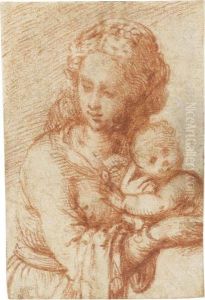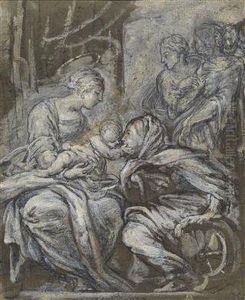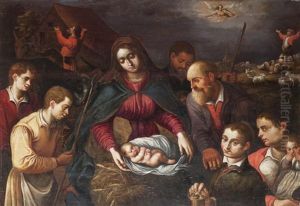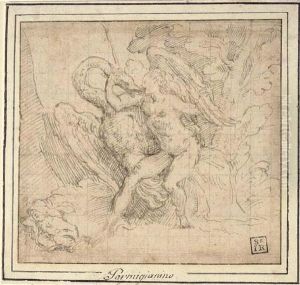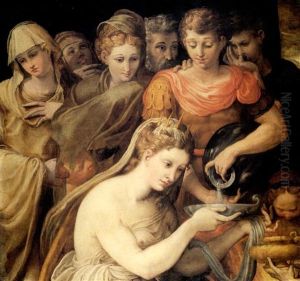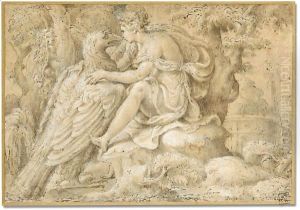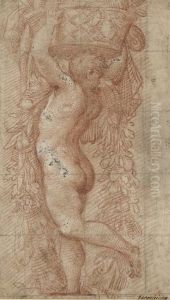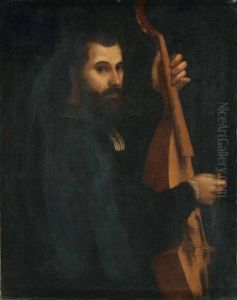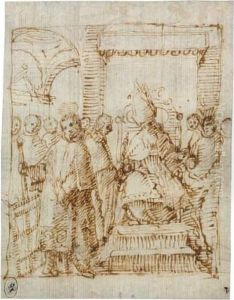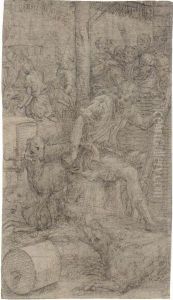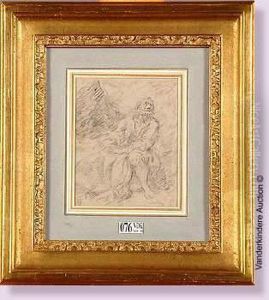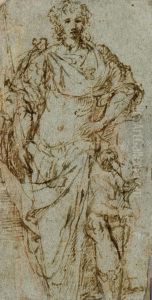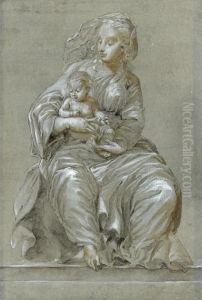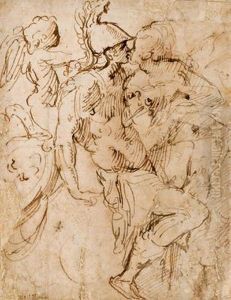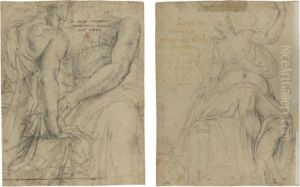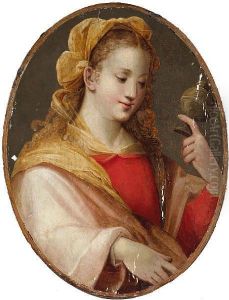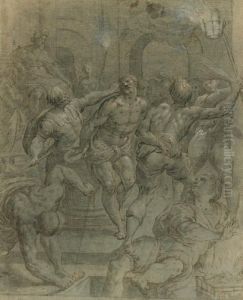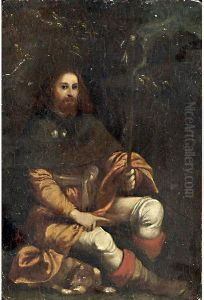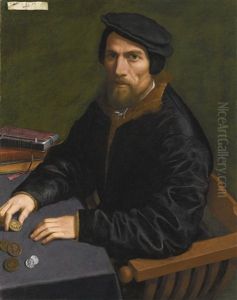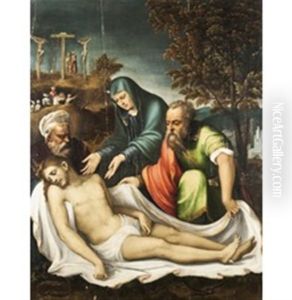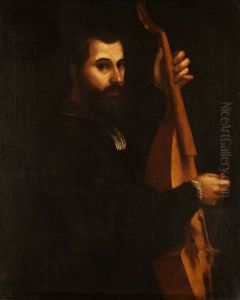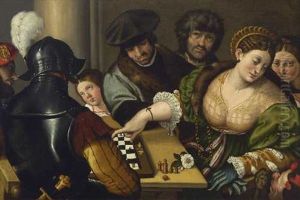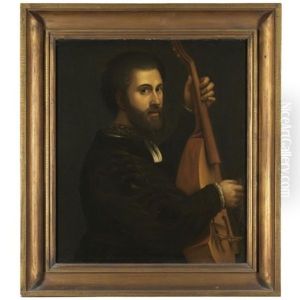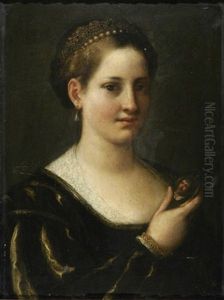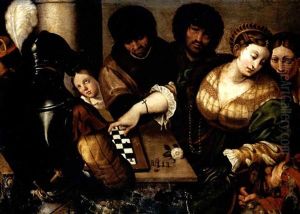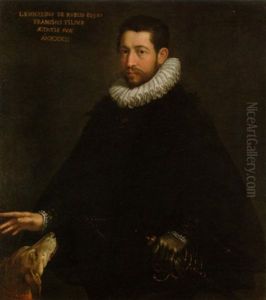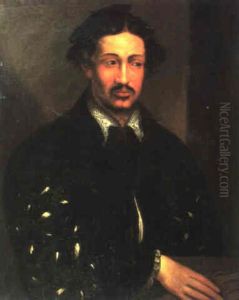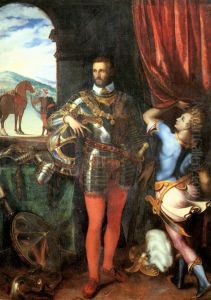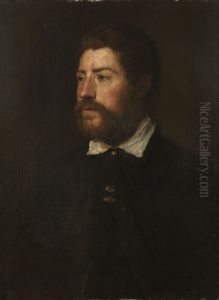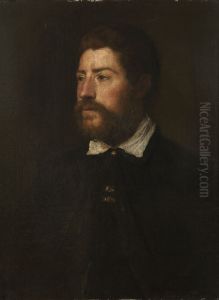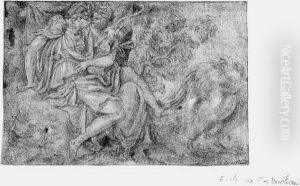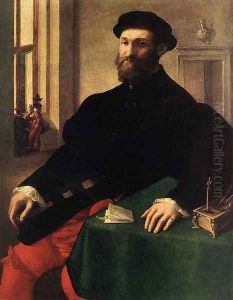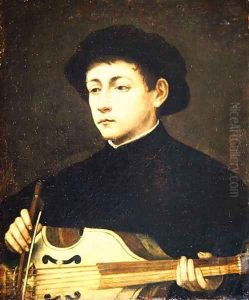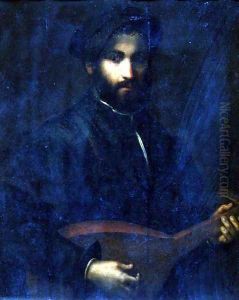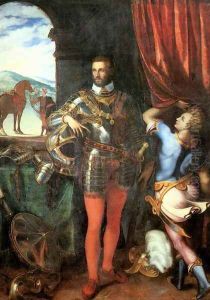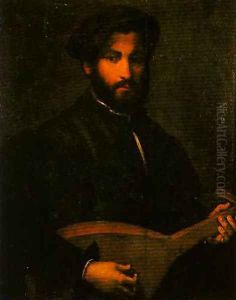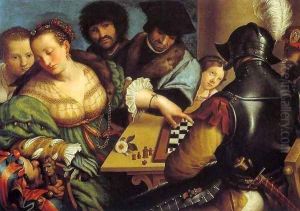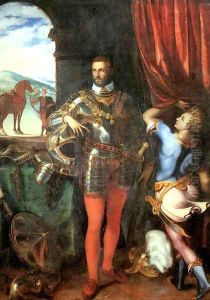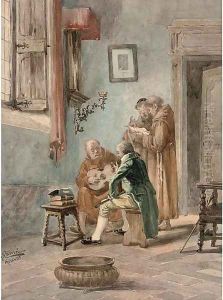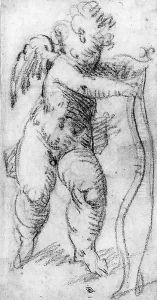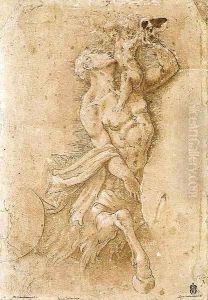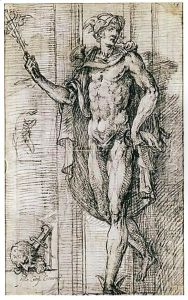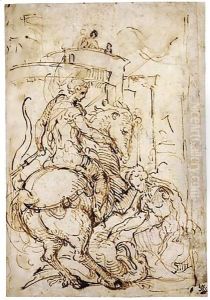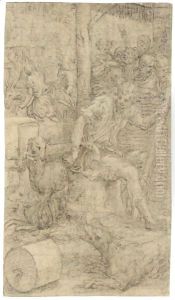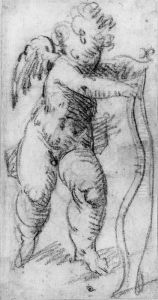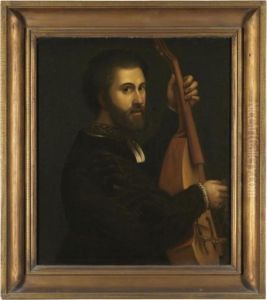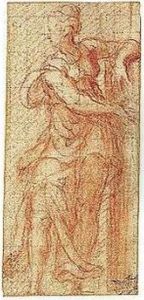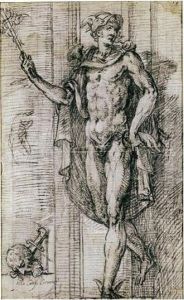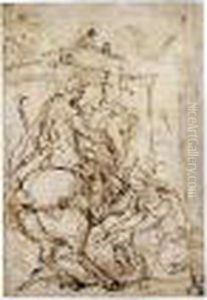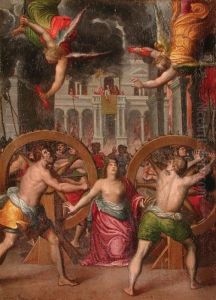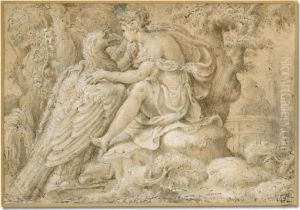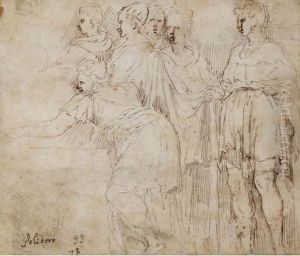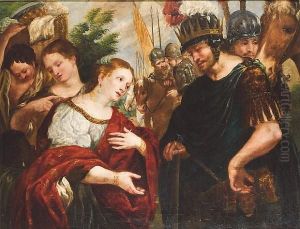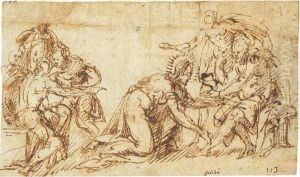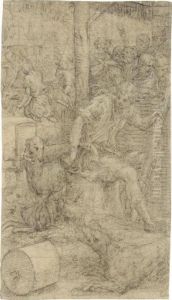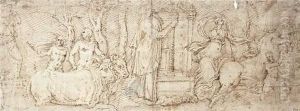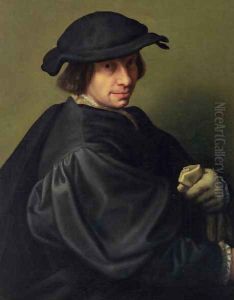Giulio Campi Paintings
Giulio Campi was an Italian painter and architect who was active during the Renaissance period. He was born in Cremona, Italy, in 1502 into a family of prominent artists. His father, Galeazzo Campi, was a painter, and his brothers, Vincenzo and Antonio Campi, were also involved in the arts. Giulio's early training was under the guidance of his father, and he was significantly influenced by the works of artists such as Raphael and Giulio Romano.
Campi's style is characterized by its use of color and a blend of Renaissance clarity with Mannerist complexity. He was known for his frescoes, altarpieces, and portraits. One of his most notable works is the decoration of the Church of Sant'Abbondio in Cremona, where his frescoes display a masterful use of perspective and narrative.
Throughout his career, Giulio Campi worked on various important projects, not only in Cremona but also in other cities such as Mantua and Milan. He became a leading figure in the Cremonese school of painting, which was marked by an attention to detail and a love for ornamental elements. His work often included religious themes but also featured mythological and historical subjects.
Campi was also an influential teacher, and his workshop attracted many students who would go on to become successful artists in their own right. His contributions to the field of architecture are less documented, but he is known to have designed several buildings and to have been involved in the decoration of others.
Giulio Campi died in 1572 in Cremona. His legacy is preserved through his numerous works that can still be seen today in churches and museums in and around his hometown and beyond. His art represents an important chapter in the development of the Italian Renaissance, bridging the gap between the High Renaissance and the emergence of Mannerism.
